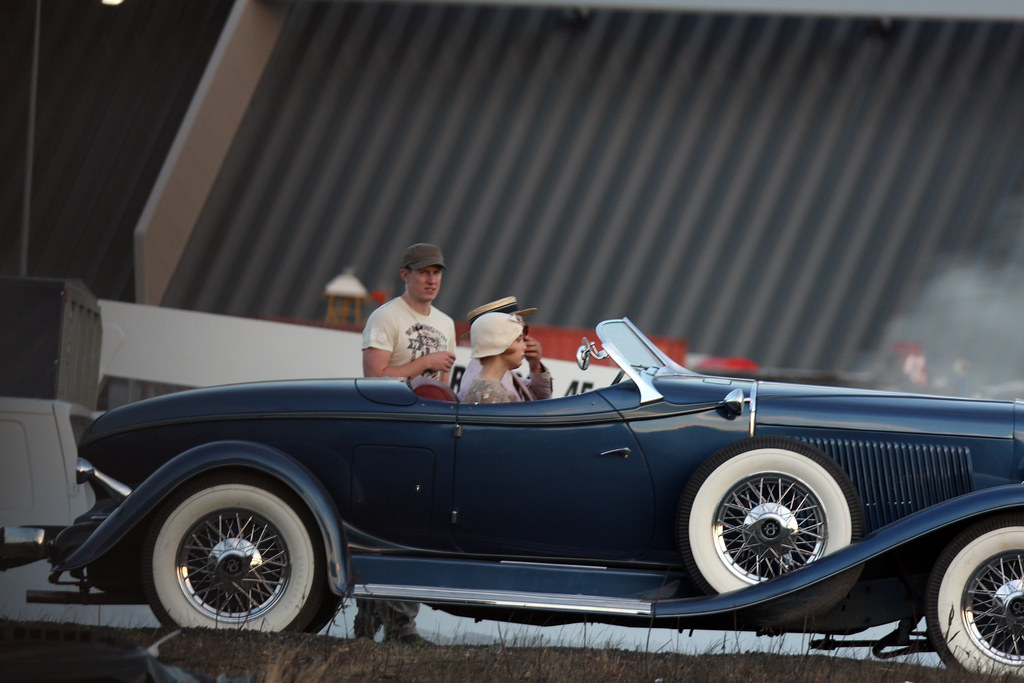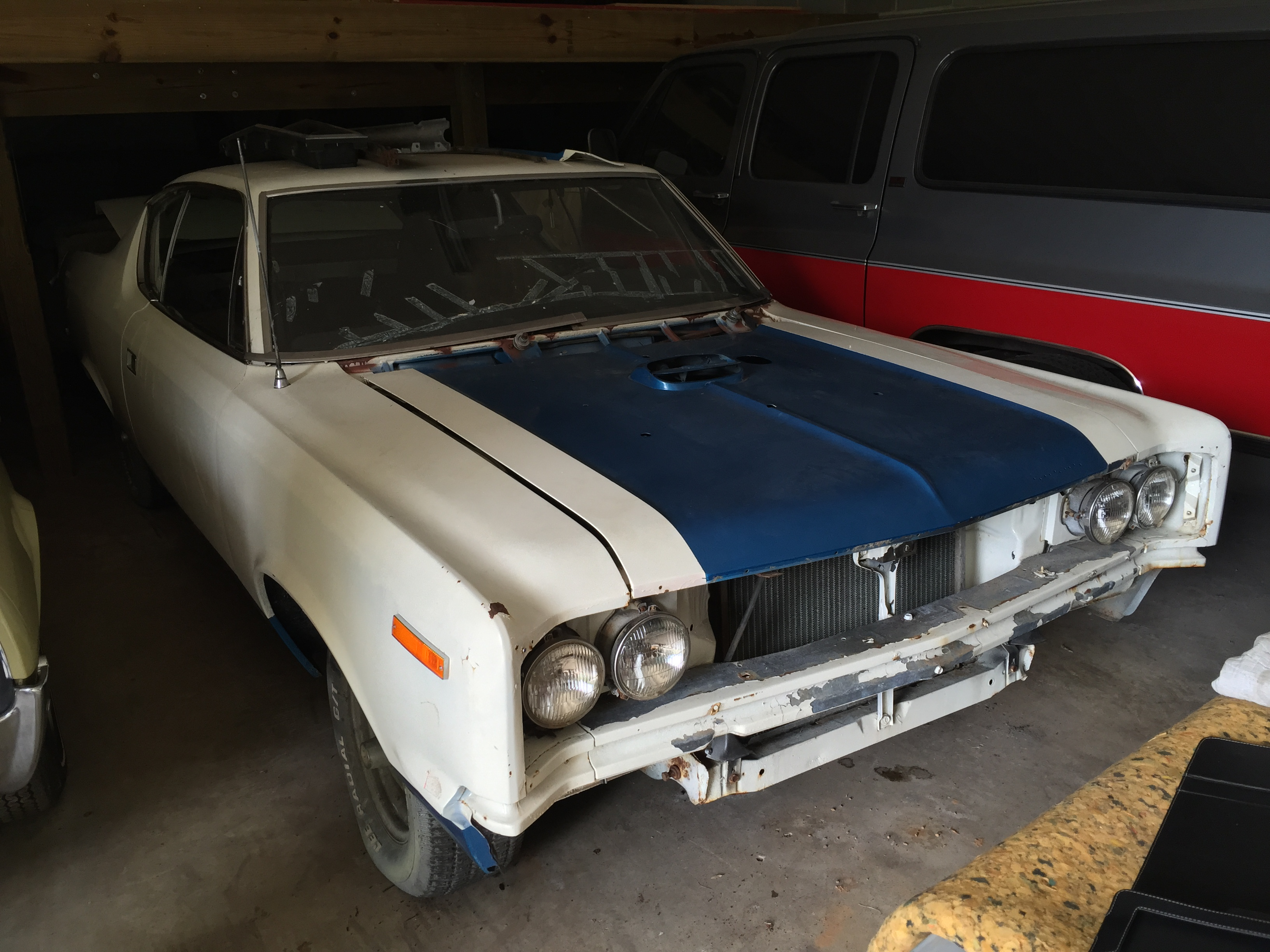
Restoring an American muscle car is more than just a hobby; it’s a passionate pursuit, a journey into automotive history, and a testament to mechanical artistry. These iconic vehicles, with their thundering V8s and timeless designs, demand respect, precision, and, most importantly, the right tools for the job. Whether you’re a seasoned enthusiast with countless rebuilds under your belt or a newcomer eager to breathe new life into a classic, equipping your garage with the proper instruments is the first, crucial step toward success.
The allure of American muscle cars lies not just in their raw power and aggressive styling, but in the rewarding challenge of bringing a relic back to its former glory. This meticulous process, from disassembling rusted components to shaping flawless body panels, hinges entirely on the quality and suitability of your toolkit. A well-equipped workshop transforms daunting tasks into manageable steps, ensuring that every bolt, every panel, and every detail is handled with the expertise these automotive legends deserve.
We’re about to embark on an in-depth exploration of the essential tools that form the bedrock of any successful muscle car restoration. This comprehensive guide will equip you with the knowledge to select the indispensable items that will not only streamline your work but also elevate the quality of your restoration, allowing you to confidently tackle everything from stubborn fasteners to intricate bodywork. Let’s delve into the first set of critical tools that will kickstart your journey.
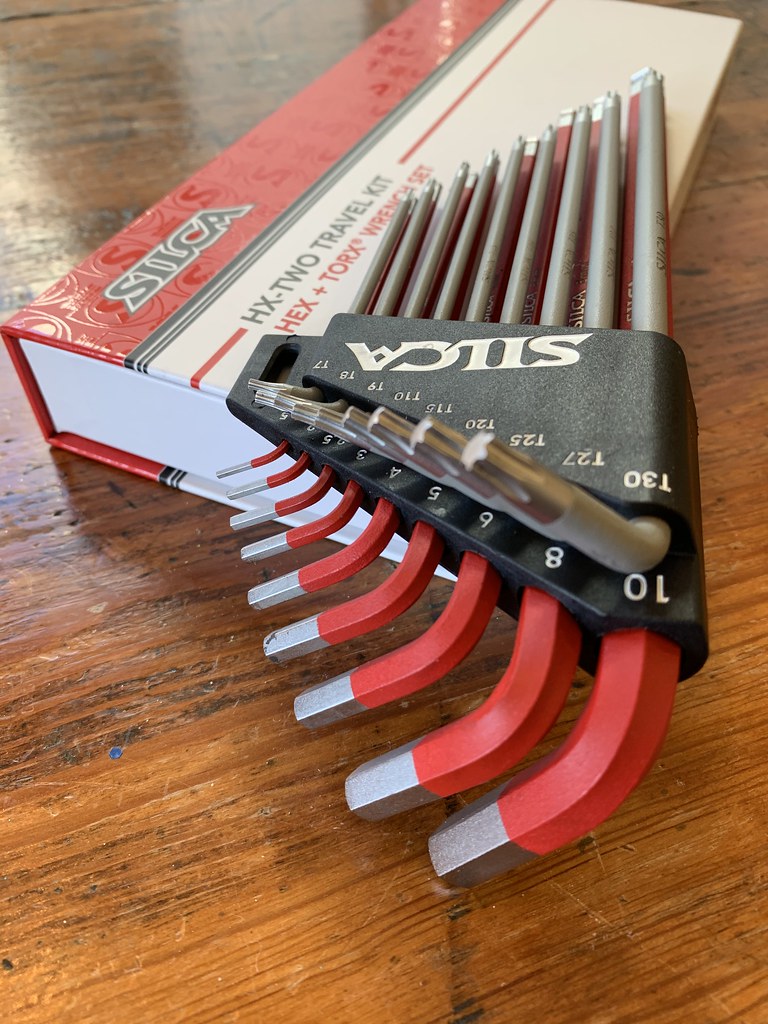
1. **Comprehensive Socket and Wrench Set (SAE & Metric)**At the very core of any automotive endeavor, especially one involving the unique specifications of American muscle cars, lies a robust collection of sockets and wrenches. These fundamental hand tools are “essential for tackling a variety of fasteners,” as the sheer diversity of nuts and bolts across different models and eras necessitates a broad range of sizes. Without a comprehensive set, you’ll quickly find yourself halted by fasteners that defy your limited arsenal, turning a simple task into a frustrating ordeal.
It is absolutely crucial to invest in both SAE (Society of Automotive Engineers, or imperial) and metric sizes. While American muscle cars predominantly feature SAE fasteners, especially in their original configurations, modern repairs, aftermarket parts, or even previous modifications might introduce metric components. A “comprehensive metric and SAE set ensures that you can tackle any fasteners you encounter,” preventing delays and ensuring you always have the right fit, which is vital for preventing rounded bolts and maintaining the integrity of your work.
Furthermore, consider the types of wrenches you acquire. “Combination wrenches, especially ratcheting types, make loosening and tightening bolts easier.” The convenience of a ratcheting mechanism in tight spaces cannot be overstated, significantly speeding up repetitive tasks. Brands like Craftsman and Snap-on are frequently cited for their “durability and reliability that can withstand the rigors of restoration,” making them wise long-term investments for any serious restorer.
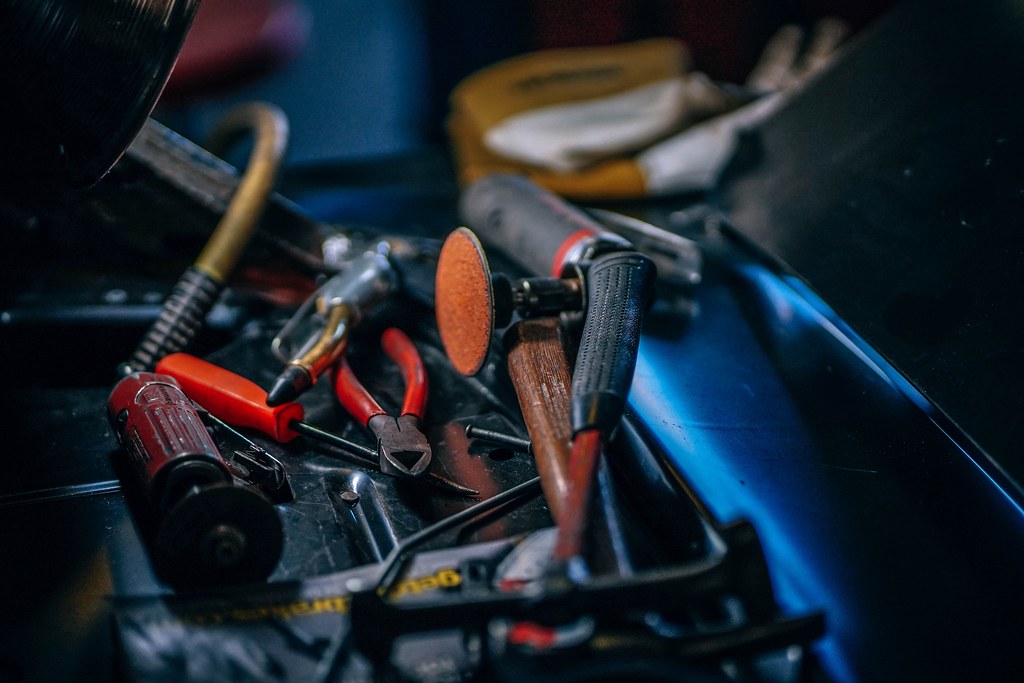
2. **Pliers and Screwdriver Set**Beyond the ubiquitous sockets and wrenches, a versatile collection of pliers and screwdrivers forms another indispensable layer of your restoration toolkit, addressing a myriad of tasks from delicate wiring to stubborn trim removal. These tools are your hands’ extensions for manipulating, gripping, and fastening components that require more than just a turn of a wrench. “Flathead and Phillips screwdrivers are essential for removing screws and fasteners,” and having a variety of sizes and lengths is paramount to accessing fasteners in deep recesses or tight corners without stripping their heads.
Pliers, in their diverse forms, are equally invaluable. “Needle-nose pliers, Vise-Grips, and a set of screwdrivers cover most small tasks.” Needle-nose pliers excel at reaching into constricted areas, manipulating small wires, or retrieving dropped components. Vise-Grips, or locking pliers, provide an unyielding grip, indispensable for holding parts securely, clamping hoses, or freeing rusted nuts that other tools can’t manage. Slip-joint pliers offer versatility for gripping objects of various sizes, proving useful in countless scenarios during disassembly and reassembly.
The choice of quality for these tools directly impacts your efficiency and the prevention of damage to delicate parts. Investing in sets that feature ergonomic handles and robust construction ensures comfort during prolonged use and the strength needed for demanding applications. These tools are not merely supplementary; they are “invaluable for manipulating smaller parts and securing wiring during the renovation process,” highlighting their crucial role in the intricate details of a muscle car’s revival.
Read more about: Your Ultimate Roadside Arsenal: 15 Practical Tools Every Driver Needs for Emergencies

3. **Hydraulic Jack and Jack Stands**Accessing the undercarriage of an American muscle car is a non-negotiable aspect of nearly every restoration project, from suspension work to exhaust system overhauls. For this critical task, “investing in a hydraulic jack and jack stands can significantly simplify the process of accessing undercarriage areas.” This pairing is not just about convenience; it is fundamentally about safety, providing the stable elevation necessary to work underneath a heavy vehicle without catastrophic risk.
A robust hydraulic jack is “a must-have for lifting the car off the ground.” It should possess a “high weight capacity to handle the car’s weight,” ensuring that even the heaviest of classic muscle cars can be lifted safely and efficiently. Floor jacks, commonly preferred for their ease of use and stability, allow you to raise the vehicle to the desired height, creating ample working space beneath. Without this capability, many vital repairs, such as those involving the drivetrain, fuel lines, or brakes, would be impossible.
Crucially, once the vehicle is lifted, “always use jack stands when working under a raised car.” Jack stands provide immovable support, acting as a redundant safety measure should the hydraulic jack fail. They “offer stability and safety while you’re working on the vehicle,” transforming a potentially perilous situation into a secure workspace. Never rely solely on a hydraulic jack for support; the adage “safety is key” resonates deeply here, emphasizing that this gear is “essential for carrying out repairs that require lifting the vehicle safely.”
Read more about: Equipping Your Garage: 15 Essential Tools Every Home Car Mechanic Should Own for Reliable DIY Maintenance

4. **Torque Wrench**In the world of American muscle car restoration, where immense power and high-speed performance are the hallmarks, precision is paramount, particularly when it comes to fastening components. This is precisely where the torque wrench transitions from a useful tool to an absolutely “crucial” one. It is not merely about tightening bolts; it is about tightening them to exact manufacturer specifications, a detail that can dramatically influence both performance and, more importantly, safety.
A quality torque wrench “ensures proper fastener tightness, which is crucial for maintaining safety and performance after repairs.” Whether you’re reassembling an engine, securing suspension components, or mounting wheels, under-tightening can lead to parts loosening and catastrophic failure, while over-tightening can strip threads, stretch bolts, or even crack delicate castings. This tool eliminates guesswork, allowing you to meet the specific “manufacturer specifications” that govern every critical connection in your vehicle.
Modern muscle car engines, with their intricate tolerances and high-stress environments, demand meticulous attention to torque values. “A torque wrench will likely be a fundamental tool for your restoration auto project,” extending beyond just engine assembly to tasks such as differential rebuilds, brake caliper installation, and chassis reinforcement. “It ensures bolts are tightened to the correct specs, critical for engine assembly,” thereby preventing costly damage and ensuring that your revitalized muscle car performs reliably and safely at its peak.
Read more about: Equipping Your Garage: 15 Essential Tools Every Home Car Mechanic Should Own for Reliable DIY Maintenance
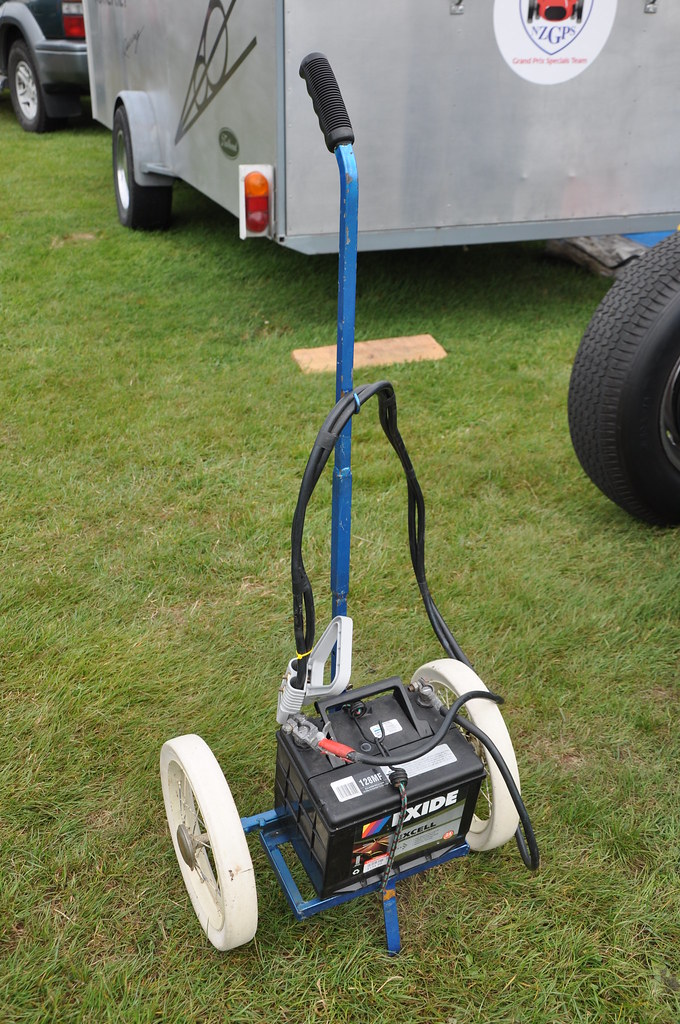
5. **Body Hammers and Dollies**The aesthetic appeal of an American muscle car is as iconic as its mechanical prowess, and often, restoring that classic silhouette involves significant bodywork. For tackling dents, creases, and imperfections in metal panels, a specialized set of “body hammers and dollies” is not just recommended; it’s “important body work tools that are worth buying for your vehicle’s restorative care.” These tools are designed to meticulously reshape metal, bringing distorted panels back to their original contours.
A good set of hammers, “especially body hammers, can significantly enhance your ability to repair dents and imperfections.” These aren’t your average claw hammers; they come with different head shapes—flat, crowned, and pick—each tailored for specific applications in metal shaping. A flat hammer might be used for rough shaping, while a crowned hammer can help to stretch or shrink metal as needed. Pick hammers are excellent for precisely raising low spots, guiding the metal back into alignment.
Dollies, often used in conjunction with body hammers, provide a solid, shaped anvil on the opposite side of the panel being worked. This allows for controlled impact and precise manipulation of the metal. “A reliable dolly set will help shape and repair metal, allowing for precise adjustments and finishing touches on your restoration project.” Together, hammers and dollies are indispensable for “fixing dents and reshaping panels,” enabling you to achieve the smooth, flawless surfaces that are characteristic of a show-quality muscle car restoration.

6. **Pry Bars and Clamps**Navigating the often-stubborn and tightly integrated components of an American muscle car during restoration calls for tools that provide both leverage and secure holding. This is where the combination of pry bars and clamps becomes invaluable, simplifying tasks that would otherwise be frustratingly difficult or unsafe. These tools are the unsung heroes of disassembly, alignment, and secure placement, critical for both precision and efficiency in your restoration efforts.
“Pry bars are invaluable for accessing tight spaces and removing stubborn panels.” Available in a “variety of lengths,” they provide the necessary leverage to separate welded seams, lift heavy components, or gently coax rusted parts apart without causing undue damage. From intricate interior trim pieces to large chassis components, a well-chosen pry bar can prevent snapped bolts or bent metal, making the removal process smoother and more controlled. Their robust construction allows them to withstand significant force, making them essential for breaking free seized connections.
Complementing pry bars are clamps, which are “Don’t overlook clamps. They assist in holding parts securely in place, which aids during welding or epoxy applications.” Whether you’re fabricating new metal, preparing for welding, or allowing adhesives to set, a diverse set of clamps—including C-clamps for general holding, locking clamps (Vise-Grips) for tighter grips, and specialty clamps for unique angles—ensures stability. “Holding parts securely in place” is paramount for accurate measurements, precise cuts, and strong bonds, safeguarding the quality of your restoration and providing peace of mind as you work.
7. **Cutting Tools (Tin Snips & Reciprocating Saws)**When your muscle car restoration project inevitably demands metal fabrication, rust panel replacement, or component modification, a select suite of cutting tools becomes absolutely “critical.” These instruments are designed to slice through sheet metal and various other materials with precision and efficiency, enabling you to tailor new panels or remove damaged sections, all while maintaining the integrity of the surrounding structure. Without them, intricate metalwork would be an insurmountable challenge.
“Cutting tools like tin snips and reciprocating saws are critical.” Tin snips are perfect for making clean, precise cuts in thinner sheet metal, ideal for custom patch panels or trimming edges for a perfect fit. They offer fine control, allowing for intricate shaping and detailed work that a larger power tool might struggle with. Having both straight-cutting and offset snips will enhance your versatility, allowing you to navigate curves and tight corners effectively, which is common when reproducing complex body lines.
For more substantial cutting tasks, especially when dealing with rusted or larger sections of metal, a reciprocating saw is indispensable. “These will help you cut sheet metal precisely, whether repairing existing pieces or fabricating new sections.” Equipped with the right blades, a reciprocating saw can quickly and effectively remove old, rusted-out panels or trim larger sheets of new metal to size. This power tool dramatically reduces the physical effort and time required for significant metal removal, making it a cornerstone for any serious body restoration work on your American muscle car.
Navigating the intricate world of American muscle car restoration moves beyond foundational hand tools into a realm where advanced power, specialized apparatus, and precise diagnostic capabilities become paramount. As we continue our journey, the focus shifts to equipping your garage with instruments that not only enhance efficiency but also elevate the quality of your work, ensuring these automotive legends perform at their peak and gleam with showroom-quality finishes. These next seven tools represent the advanced arsenal required to tackle everything from robust engine rebuilds to flawless paint jobs and critical electrical overhauls, culminating in a workspace that prioritizes both precision and safety.

8. **Impact Wrench and Air Compressor**As restoration projects delve deeper into an American muscle car’s robust chassis and powertrain, the need for formidable power tools becomes undeniable. A quality impact wrench is a game-changer, described as a “must-have for loosening and tightening stubborn bolts during a rebuild,” dramatically speeding up tasks that would otherwise require immense manual effort. Its high torque output makes quick work of rusted or overtightened fasteners, transforming frustrating delays into swift progress and enabling more efficient disassembly and assembly.
Complementing the sheer force of an impact wrench, an air compressor serves as the versatile heart of any advanced workshop, powering a wide array of pneumatic tools. From powering the impact wrench itself to running air-powered sanders, grinders, and blow guns, it’s an “essential” piece of equipment that provides consistent, high-pressure air for various tasks. This multi-functional utility makes it indispensable for both detailed cleaning and heavy-duty mechanical work, truly enhancing the capabilities of your restoration space.
Together, the impact wrench and air compressor form a formidable duo that significantly boosts productivity and precision. The air compressor ensures a continuous supply of power for pneumatic tools, while the impact wrench delivers controlled, high-torque action, crucial for the integrity of engine and suspension components. Investing in models with adjustable torque settings provides the precision necessary for proper car maintenance, making these tools invaluable for serious enthusiasts dedicated to quality results.
Read more about: Your Ultimate Checklist: 12 Simple Steps to Prep Your Car for an Epic 5000-Mile Cross-Country Road Trip

9. **Engine Hoist and Stand**The sheer weight and complexity of an American muscle car’s V8 engine mean that handling it requires specialized equipment designed for both safety and meticulous rebuilding. An engine hoist, often referred to as an engine crane, is “vital for removing and rebuilding engines safely,” simplifying the monumental task of lifting the heavy powerplant out of the vehicle and maneuvering it into the workspace. This powerful apparatus ensures that this critical component can be moved without risk of injury or damage, providing peace of mind during one of the most significant phases of restoration.
Once removed, an engine stand becomes an equally indispensable piece of apparatus, securely holding the engine in an accessible position. It allows the mechanic to rotate the engine 360 degrees, providing optimal access to all sides and components for thorough inspection, disassembly, and rebuilding. This stable platform transforms a cumbersome engine block into a manageable workbench, enabling detailed work on cylinder heads, crankshafts, and other intricate parts with ease and ergonomic efficiency.
The combination of an engine hoist and stand is paramount for any serious engine restoration. The hoist facilitates safe removal and installation, while the stand provides the necessary stability and access for a comprehensive rebuild. This specialized pairing ensures that the heart of your muscle car receives the exacting attention it deserves, allowing for precise adjustments and thorough work that ultimately contribute to peak performance and longevity.
Read more about: Equipping Your Garage: 15 Essential Tools Every Home Car Mechanic Should Own for Reliable DIY Maintenance
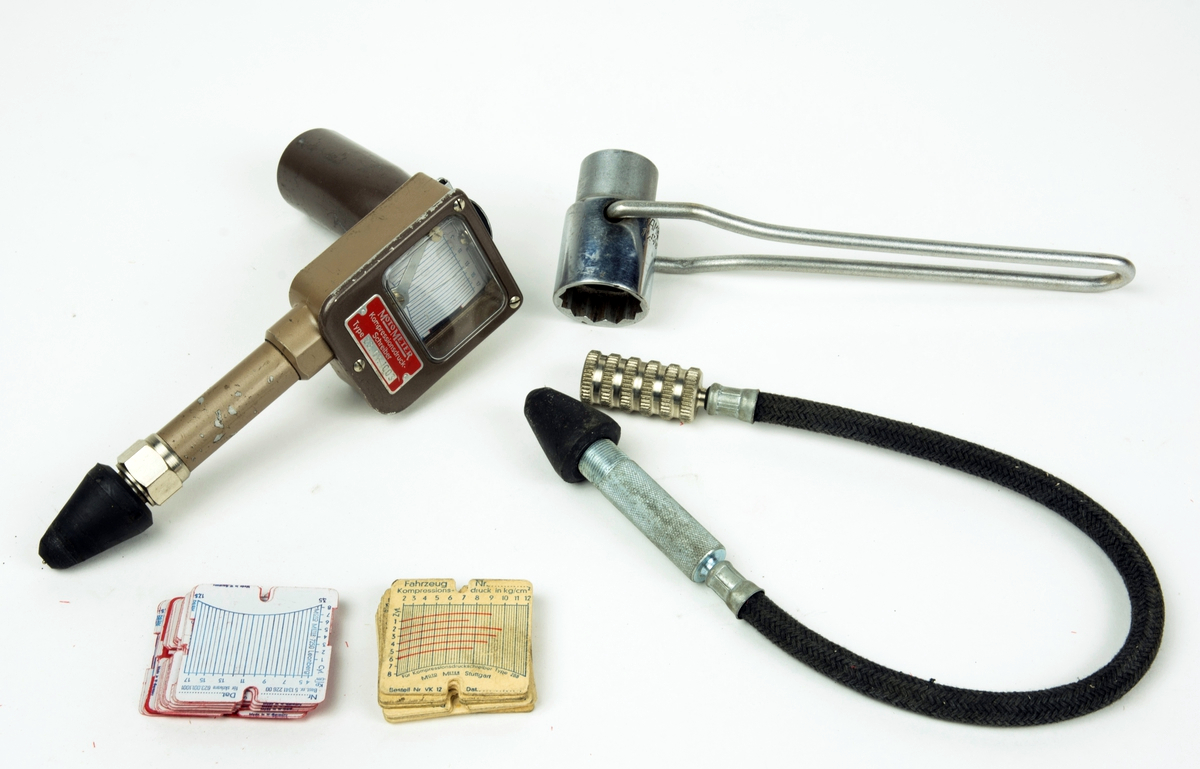
10. **Compression Tester and Coolant Pressure Tester**For the discerning muscle car enthusiast, understanding the internal health and robust performance of an engine is paramount, making diagnostic tools critical for pre-restoration assessment and post-rebuild verification. A compression tester is a “vital” instrument used “to measure the engine’s compression pressure,” helping “diagnose problems with cylinders or valves.” By assessing whether each cylinder is sealing properly, this tool provides crucial insights into potential issues like worn piston rings, faulty valves, or head gasket leaks, which are fundamental to address for optimal engine output.
Equally important for engine longevity and reliability, especially in high-performance muscle cars, is a coolant pressure tester. This specialized tool helps “detect leaks and ensures the system is functioning correctly,” safeguarding against the catastrophic effects of overheating. By pressurizing the cooling system, it can quickly pinpoint leaks in radiators, hoses, water pumps, or heater cores, ensuring that the engine’s vital cooling mechanisms are in perfect working order before the car returns to the road.
Together, these diagnostic instruments are indispensable for both initial assessment and quality control during engine restoration. The compression tester offers a window into the engine’s mechanical integrity, while the coolant pressure tester guarantees the efficiency of its thermal management. Leveraging these tools ensures that your revitalized muscle car not only looks the part but also delivers reliable and powerful performance, critical for any enthusiast who demands excellence from their classic vehicle.
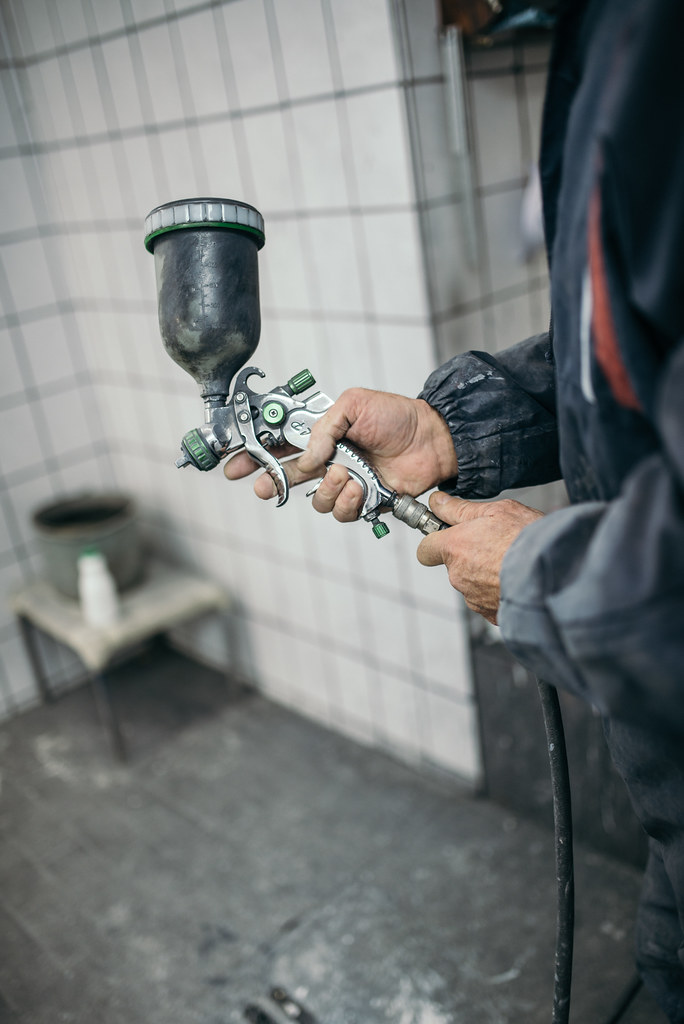
11. **Spray Gun and Dual-Action Sander**Achieving that coveted showroom-quality finish on an American muscle car is a meticulous art, demanding specialized tools that ensure both precision in application and perfection in surface preparation. A quality spray gun is “fundamental for applying paint smoothly on surfaces,” ensuring an even and professional-grade finish. Options like HVLP (High Volume Low Pressure) guns are particularly favored for their ability to “minimize overspray, saving materials and providing a professional touch,” making them indispensable for achieving the deep, lustrous paintwork that defines a beautifully restored classic.
Before any paint touches the metal, flawless surface preparation is non-negotiable, and a dual-action sander steps in as the ideal companion. This versatile tool “combines sanding and polishing capabilities, helping to eliminate imperfections,” from minor flaws to old paint and rust, preparing surfaces meticulously for painting. Its orbital and rotational movements ensure a uniform finish, preventing swirl marks and creating an impeccably smooth base that allows the final paint coats to adhere perfectly and shine brilliantly.
The synergy between a high-quality spray gun and a dual-action sander is crucial for transforming a worn-out body into a stunning masterpiece. The sander meticulously preps the canvas, ensuring every curve and panel is flawlessly smooth, while the spray gun applies the vibrant colors with an even, professional sheen. This combination represents the pinnacle of professional painting and finishing equipment, enabling restorers to bring the iconic aesthetic of American muscle cars back to their original, breathtaking glory.

12. **Multimeter and Soldering Iron**The electrical systems of classic American muscle cars, while simpler than modern vehicles, can still present intricate challenges, making precise diagnostic and repair tools absolutely crucial. A multimeter is “essential for diagnosing electrical issues by measuring voltage, current, and resistance.” This versatile instrument becomes your eyes and ears for identifying everything from short circuits and faulty wiring to bad connections, allowing you to meticulously trace and rectify problems within the car’s electrical nervous system, ensuring reliable operation.
For repairing and securing electrical connections, a soldering iron is an indispensable tool, “essential for repairing damaged electrical connections.” It enables you to join wires or components by melting solder around the connection, creating a strong, conductive, and permanent bond. This precision tool is vital for ensuring that all electrical circuits, from lighting to ignition systems, are robust and dependable, preventing intermittent faults that can plague older vehicles.
Together, the multimeter and soldering iron form the cornerstone of any effective electrical restoration. The multimeter empowers you to pinpoint the exact location and nature of an electrical fault, while the soldering iron provides the means to execute a professional, lasting repair. These instruments ensure that every electrical pulse within your muscle car is strong and steady, contributing to overall performance, safety, and the seamless integration of any modern electrical upgrades.
Read more about: Avoid the Pitfalls: The 14 Most Common Mistakes People Make When Installing Aftermarket Car Stereo Systems

13. **Wire Cutters and Strippers**Beyond general-purpose pliers, specialized wire cutters and strippers are fundamental for any detailed electrical work on an American muscle car, ensuring clean, precise manipulations of the vehicle’s intricate wiring harness. These tools are “crucial for cutting and preparing wires for installation,” making them indispensable for everything from repairing damaged sections to completely re-wiring components. Their ergonomic design and sharp blades allow for clean cuts that prevent fraying, a critical detail for long-lasting electrical integrity.
The stripping function of these tools is equally vital, allowing for the precise removal of insulation without damaging the conductor beneath. This meticulous process is paramount for creating secure electrical connections, whether you’re crimping terminals, soldering wires, or connecting to switches and relays. Having a variety of sizes and gauges ensures that you can handle different wire thicknesses found throughout a classic car, from delicate dash wiring to heavier gauge power cables.
Investing in high-quality wire cutters and strippers directly translates to safer, more reliable electrical systems in your muscle car. They enable professional-grade wiring work, minimizing the risk of short circuits, loose connections, or future electrical failures. For an enthusiast striving for perfection, these tools ensure that the often-overlooked electrical components are as robust and dependable as the engine itself, contributing significantly to the overall quality and safety of the restoration.

14. **Comprehensive Safety Gear**No amount of mechanical prowess or aesthetic dedication is worthwhile without an unwavering commitment to safety. During any American muscle car restoration, where you’re dealing with heavy machinery, chemicals, sharp metals, and powerful tools, “safety is always a priority.” A robust set of personal protective equipment is not an accessory but an “indispensable” requirement, starting with a good pair of “work gloves” to shield hands from cuts, burns, and dirt, and “safety glasses” which are absolutely “essential when grinding, welding, or working with power tools to protect your eyes from debris and sparks.”
Beyond basic protection, specific tasks demand specialized gear. “Ear protection” is vital to “safeguard your hearing during extended periods of use” with loud power tools, preventing long-term damage. When undertaking paint application or dealing with other hazardous fumes, a “respirator mask” is a critical item to protect your respiratory system. For welding tasks, a “welding helmet” provides comprehensive face and eye protection from intense light and sparks, ensuring a secure working environment.
Prioritizing and utilizing comprehensive safety gear ensures that you can work with confidence and focus, knowing that you are protected against the myriad hazards inherent in automotive restoration. It’s an investment in your well-being, allowing you to tackle challenging projects without undue risk and ultimately enabling you to achieve the high-quality results your American muscle car deserves, while keeping you safe to enjoy it for years to come.
Read more about: Equipping Your Garage: 15 Essential Tools Every Home Car Mechanic Should Own for Reliable DIY Maintenance
Bringing an American muscle car back to its roaring glory is a profound journey, a symphony of skill, patience, and the right instruments. From the foundational hand tools that shape the metal to the advanced power tools that sculpt performance, and the precision instruments that ensure every electrical pulse is perfect, each item in your toolkit plays a critical, often ‘essential’, role. It’s the meticulous application of these tools, combined with a deep passion for automotive heritage, that transforms a rusted relic into a breathtaking masterpiece. Embrace the challenge, equip your garage wisely, and rediscover the timeless thrill of a truly revitalized American icon.

